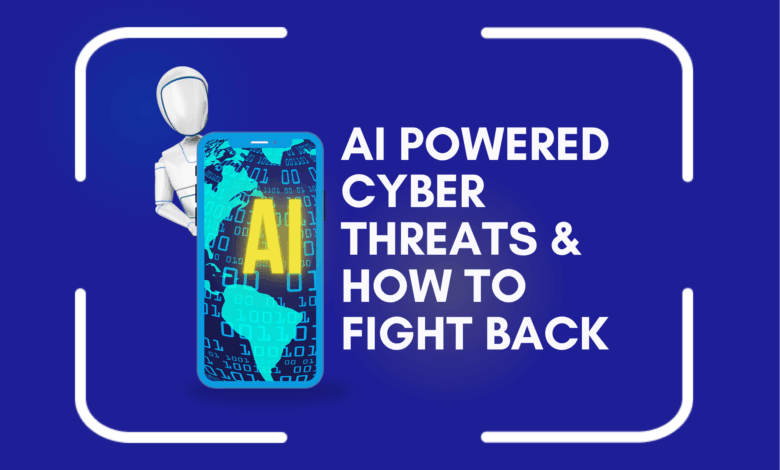
When it comes to Artificial Intelligence (AI), staying ahead isn’t optional—it’s critical. AI has rapidly become a foundational force in both business and cybercrime. While we embrace the benefits of AI-enhanced productivity, intelligent automation and smart analytics, it’s just as important to recognize the darker side: AI-powered threats that are evolving faster than traditional security measures can adapt. In this post, we break down current AI threats and provide practical, future-ready security strategies.
Understanding AI: Friend or Foe?
AI is not inherently good or bad—it’s a tool. Like any powerful tool, it can be used to build or break. In the hands of cybercriminals, AI can be trained to mimic human behavior, analyze massive datasets for vulnerabilities and even orchestrate large-scale attacks autonomously. For IT leaders, this shift represents a new era of cybersecurity: one where threats are faster, smarter and more deceptive than ever before.
Real and Present Dangers: AI Threats & Cybersecurity Solutions that could Impact Your Business
1. Hyper-Realistic Phishing and Business Email Compromise (BEC)
AI can generate highly convincing emails that replicate the tone, syntax and even signature of legitimate senders. Unlike traditional phishing, AI-enhanced phishing campaigns can:
- Scrape company websites and social media for contextual details.
- Target specific departments with industry-relevant language.
- Mimic C-level executives with uncanny accuracy.
A recent example? An AI-generated audio clip was used to impersonate a company executive and authorize a fraudulent bank transfer.
2. Deepfake Deceptions
AI-generated video and audio have become so convincing that even vigilant teams can fall for them. Deepfakes now pose serious threats by simulating video calls, faking interviews and even bypassing biometric logins. One recent case involved a finance worker in Hong Kong who was tricked by a video deepfake of their CFO into transferring $25 million. In response to these evolving threats, a major software company successfully blocked $4 billion in fraud attempts and stopped millions of fake signups over the past year.
3. Ransomware Supercharged by AI
AI enables attackers to deploy ransomware with enhanced targeting, timing and evasion capabilities. Algorithms can determine the best time to strike based on network behavior, or selectively encrypt critical systems to maximize leverage. AI also helps threat actors evade traditional detection methods by adapting code in real time.
4. Automated Vulnerability Discovery
Rather than manually probing for weaknesses, attackers now use AI bots to scan for outdated software, exposed services and misconfigured systems. These bots operate 24/7, often identifying exploitable points before patch cycles catch up.
This raises the urgency of continuous monitoring and automated patching, and last year, as such, many major technology solutions began reviewing their security innovations with generative AI at the forefront—leveraging it to detect anomalies faster, automate threat response, and stay ahead of increasingly sophisticated cyberattacks.
5. Social Engineering at Scale
With AI, malicious actors can conduct deep reconnaissance on targets, analyze speech and writing styles, and automate responses that seem personal and authentic. This allows them to scale social engineering attacks without compromising believability.
Deep profiling also enables attackers to exploit psychological triggers, increasing the success rate of scams.
Fortifying Your Business: Security Measures for Today and Tomorrow
With so much going on in the world of AI, where do you start to make sure your environment is secure today? A good first step is reviewing current settings on email, file servers and network access to spot weak points. This can reveal opportunities to strengthen defenses or integrate modern tools like AI-enhanced detection systems. AI-driven unified security solutions now offer advanced endpoint protection and real-time threat detection to boost resilience.
A comprehensive approach to cybersecurity—including training, planning and governance—is essential in a rapidly evolving threat landscape. Maintaining compliance with frameworks like SOC2 reinforces the importance of strong confidentiality practices and secure infrastructure—particularly when handling sensitive client data. From VoIP communication systems to cloud solutions, it’s imperative to make sure the hardware and software an organization uses is locked down. Extensive security training and planning can help your team with things like:
- Risk Assessment & Compliance Review: A complete AI and cybersecurity readiness assessment to focus on:
- Endpoint protection
- Network segmentation
- Data access controls
- Email security configurations
- Incident Response Planning: Develop and implement an effective incident response plan, ensuring quick recovery and minimal disruption in the event of a cyberattack.
- Employee Training and Awareness: Educating your team is crucial to help employees recognize and respond to potential threats, reducing the risk of human error.
- Utilize proactive technology and training:
- Simulated phishing campaigns.
- Deepfake awareness workshops.
- Social engineering red-team exercises.
- Detect threats in real-time.
- Roll back ransomware attacks.
- Isolate infected systems automatically.
Looking Ahead: Embracing AI Responsibly
AI is here to stay, and its influence will only grow—reshaping everything from business operations and cybersecurity to customer experience and everyday decision-making. As organizations integrate AI into more aspects of their digital ecosystems, the need for ethical, transparent, and secure implementation becomes critical.
Being responsible with AI means not just adopting the latest tools, but understanding their implications. It requires ongoing education, strong governance frameworks, and collaboration between IT leaders, security teams, and executive decision-makers. By staying informed and proactive, businesses can harness AI’s transformative potential while also safeguarding data privacy, minimizing bias, and preventing misuse.
In short, the future isn’t about choosing between innovation and security—it’s about designing systems where the two go hand in hand.





